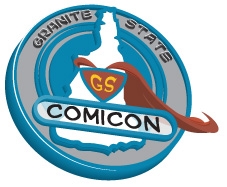In earlier pieces here I’ve talked about the Heinlein “multiverse” and how I consider the idea of parallel universes one of the successful predictions of science fiction. Along comes physicist Brian Greene to support that assertion in a far more elegant way than I could. His book The Hidden Reality: Parallel Universes and the Deep Laws of the Cosmos explores the current understanding of elemental concepts in science and demonstrates how they point to the existence of parallel worlds/universes. Looking explicitly at advances in the understanding of cosmology, string theory, quantum mechanics, General Relativity, computational physics, and philosophy, Greene explains how the concept of a multiverse exists as an inevitable outcome of what we think we know in these fields and identifies nine different multiverses, all with different characteristics and properties. I’ll discuss each of the derived multiverses and point out where they might apply to sci-fi literature as a way to introduce the book.
Greene begins with cosmology theory and discusses two multiverse constructs–the Quilted Multiverse and the Inflationary Multiverse. The Quilted Multiverse is the result of an infinite cosmos, where there are an infinite number of copies of universes, some exact in time and activity, others differing in either time or activity or both. This multiverse is interesting from a science fiction perspective because it provides a framework consistent with the multiverses constructed by Heinlein and others. The Inflationary Multiverse concept is derived from that element of cosmology that postulates a multitude of rapid spatial expansions as the consequence of “big bang” events scattered widely among the cosmos. Each “inflation” brings rise to a “bubble universe“.
Elements of string theory give rise to the next three sets of parallel universes: the Brane, Cyclic, and Landscape multiverses. In the Brane Multiverse a multitude of three dimensional spaces (branes) are stacked up against one another (Greene compares them to slices of bread in a loaf), separate but just “next door.” This multiverse would match up with those stories where there’s a thin barrier between one world and the next (the three things that immediately come to mind are the Cobbly World in Simak’s City, Heinlein’s short story “And He Built a Crooked House”, and any number of Rod Serling Twilight Zone stories), where breaching a barrier (the “cut” in the loaf) allows you to pass into another universe via another dimension. The Cyclic Multiverse, a result of two branes repeatedly colliding and separating (causing each to start anew), is the first discussed by Greene that postulates temporally diverse parallel universes rather than spatially diverse ones. The final string theory based multiverse, the Landscape Multiverse, envisions bubble universes of a type similar to those from the Inflationary Multiverse, but nested within one another…bubbles within bubbles within bubbles. At a conceptual level the Landscape Multiverse might correspond to the construct used by Capt S.P. Meek in his short stories “Submicroscopic” and “Awlo of Ulm”, and by Henry Hasse in “He Who Shrank.”
Quantum mechanics provides the basis for the Quantum Multiverse. The Quantum Multiverse is essentially an outgrowth of the probabilistic nature of quantum mechanics; each possible outcome of a quantum measurement (think the Schrodinger’s Cat experiment) creates its own separate world. This multiverse seems to fit conceptually with the parallel universes in Asimov’s The End of Eternity and Ray Bradbury’s “A Sound of Thunder”, and with most time travel paradox stories.
General Relativity and its black hole offspring, combined with a bit of information theory, comprise the basis for the Holographic Multiverse. In a nutshell it supposes that the three dimensional reality we experience here is actually a holographic representation of two dimensional physical activities taking place in some distant location. Consequently there would be two tightly connected parallel universes, one the shadow of the other. From my perspective this multiverse is probably the least interesting from a sci-fi perspective in that it doesn’t allow for differences that can be exploited.
Computational physics provides the framework for the most speculative concept, the Simulated Multiverse. The Simulated Multiverse is exactly as it sounds–a multiverse created within the world of computer software, but with enough computational power so that it would seem “real” (Greene likens it to Second Life, but with the inhabitants having sentience and self-awareness rather than being simply avatars controlled from “outside” (and interacting within their world accordingly). In some ways this multiverse could be seen as an extension or offshoot of Heinlein’s “World as Myth” concept.
The final multiverse Greene discusses is the Ultimate Multiverse, derived from a philosophical perspective of “why choose one of the previous eight and wonder if you’re right?” The Ultimate Multiverse postulates that ALL possible multiverses exist, regardless of their origin or basis.
Greene, of course, does a far more extensive job of explaining why the scientific concepts lead to the various multiverses, and along the way provides a good discussion of the underlying science as well. He avoids equations and explains the science through historical anecdote and contemporary analogies (using Eric Cartman on a mountain to describe potential and kinetic energy is one interesting example). He makes the science understandable to an intelligent non-scientist without watering it down, although if science is not at least an interest the book might still be a tough read. His book is worth reading both for the science and for understanding how that science now predicts some of the concepts that science fiction writers have used for decades.






Heielein’s Number Of The Beast is a wonderful example of Quilted Multiverse. It’s a staple of his later writing and consistantly makes my head spin.
Dome–It’s amazing how just about every sci-fi story I’ve read that dealt with a parallel universe falls into one of the categories Greene describes in his book. I think we’re still a good bit away from the Burroughs Continua Device, though!